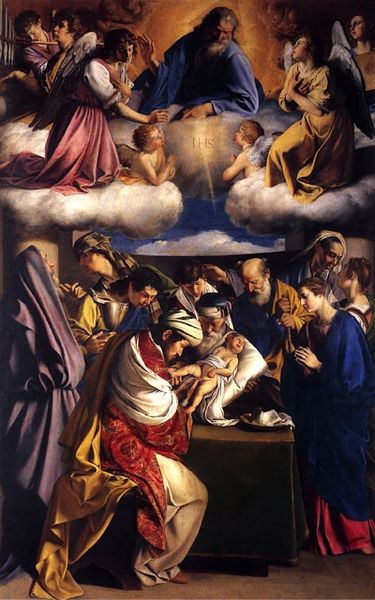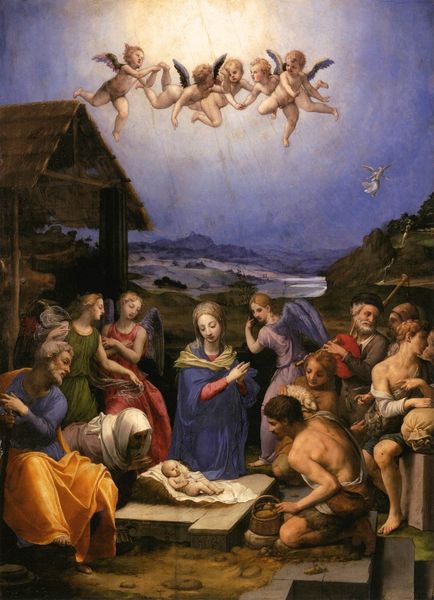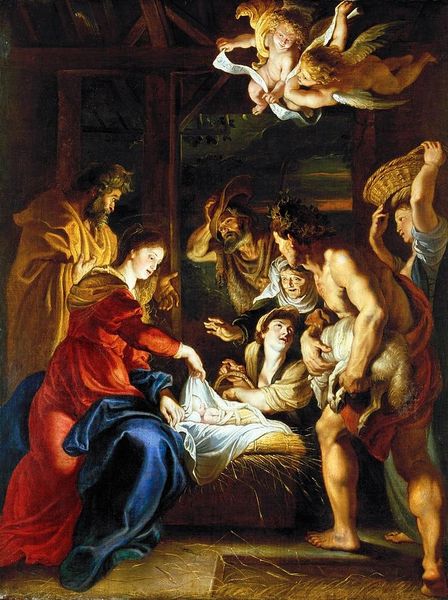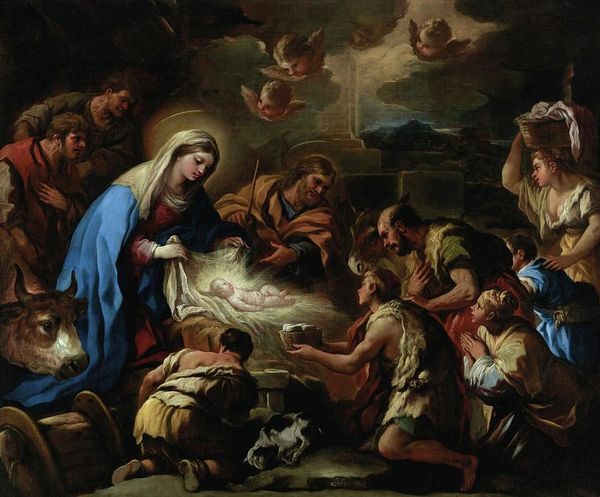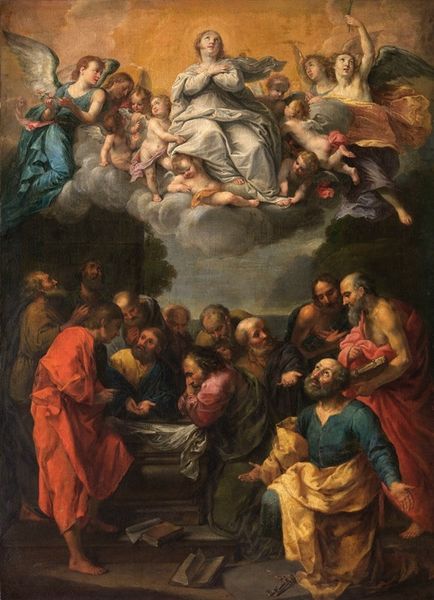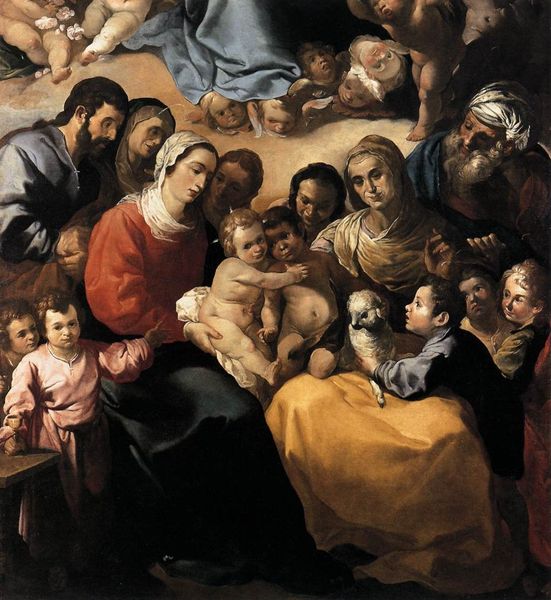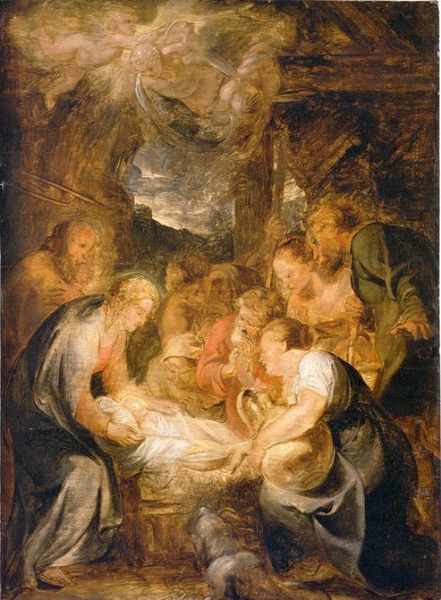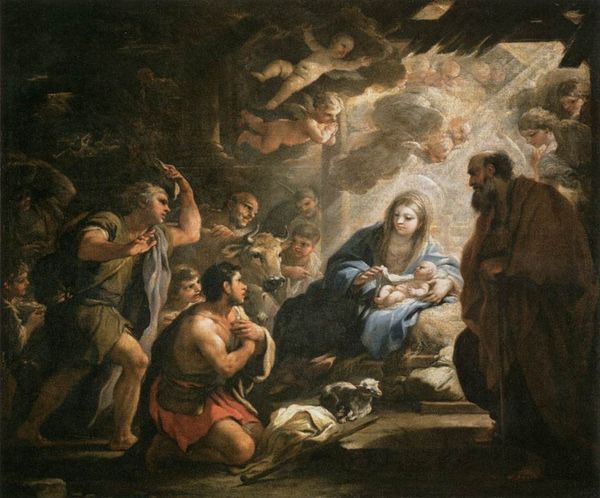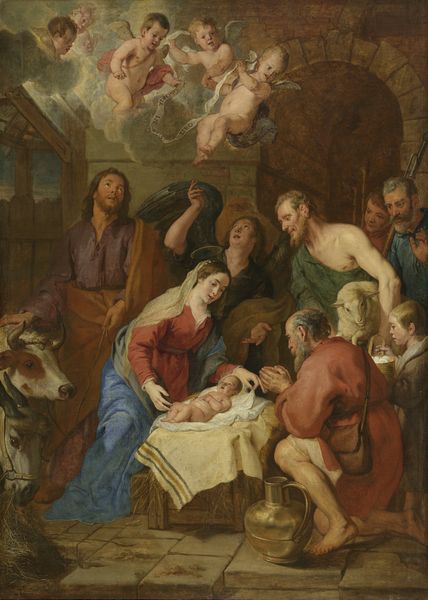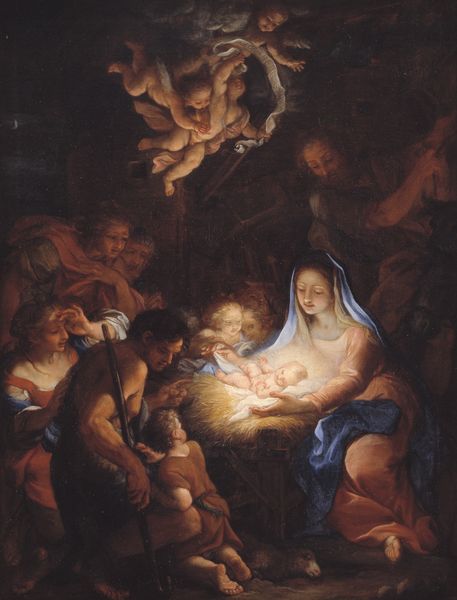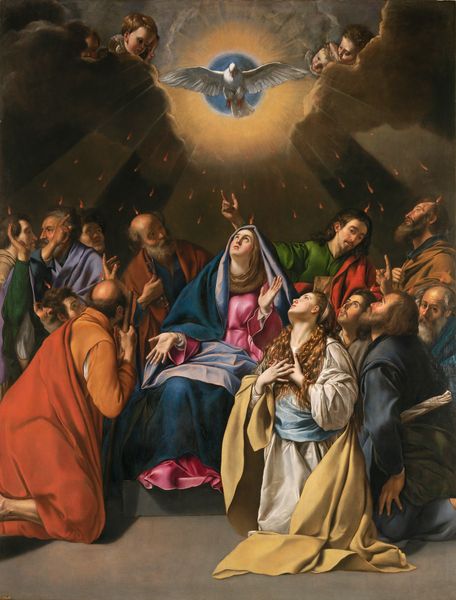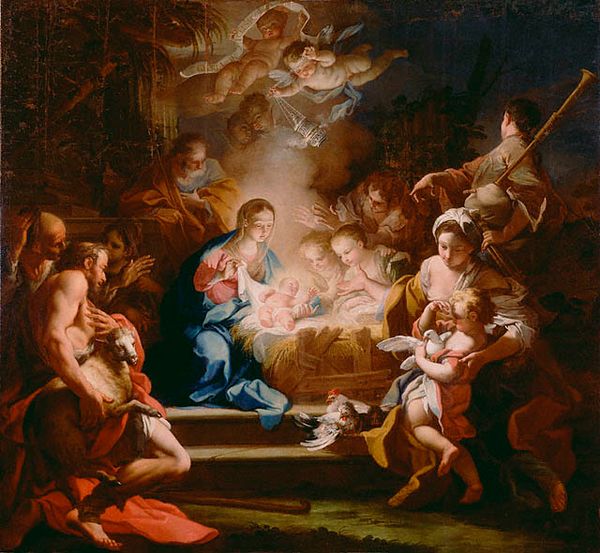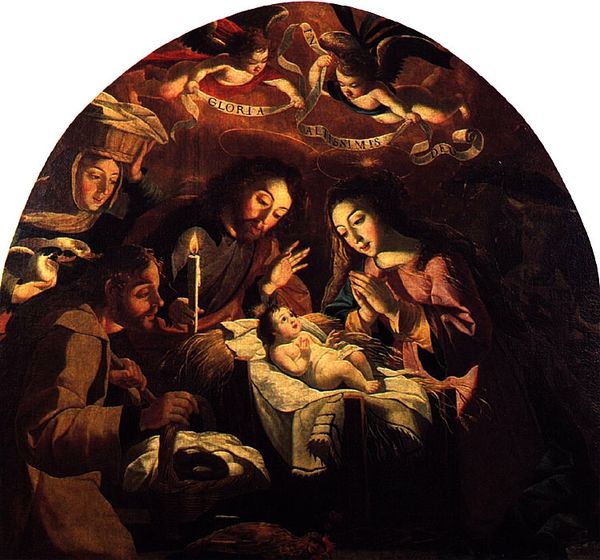
painting, oil-paint
#
baroque
#
painting
#
oil-paint
#
figuration
#
oil painting
#
child
#
animal portrait
#
christianity
#
painting painterly
#
genre-painting
#
history-painting
#
portrait art
#
christ
Dimensions: 485 x 350 cm
Copyright: Public domain
Curator: What a softly lit scene! My eye is drawn immediately to the radiating baby Jesus in the center; the figures around him look transfixed. Editor: Yes, the illumination is masterful, bordering on theatrical, which suits its history. Here we have Guido Reni's "Adoration of the Shepherds" completed around 1642. It's an oil painting depicting the classic nativity scene. Curator: The contrast between the divine luminosity and the rustic figures emphasizes the moment's spiritual weight. The use of oil on canvas would certainly have lent a richness and depth to the colors. But considering its commission and its purpose within, presumably, a church, the intention must have been to stir feelings of devotion, to inspire and celebrate. Editor: Exactly! The oil paint would have allowed Reni to blend the colors so seamlessly, creating these smooth, idealized figures. Yet I wonder about the shepherds' garments. Were they created for them? Or are they just simple fabrics used to clothe laborers? These considerations shape our view of devotional imagery, which often glosses over these real material aspects. Curator: Well, consider how these kinds of paintings shaped the churchgoer’s worldview at the time. Reni and his contemporaries played a role in constructing how the average worshiper conceptualized biblical events, subtly influencing both theology and piety in the 17th Century. Editor: The artist, Reni, almost had to consider that the laborers were the working class people viewing it and how they are viewed. Are they worthy in rags? Would it be blasphemous? Did he even think of those parameters? Those details, the very physicality of it all—it’s integral to its meaning, more than pure faith alone. Curator: Fair point! Reflecting on that balance between divine and the laboring class, illuminates some hidden historical and religious social stratifications in this baroque nativity scene, for sure. Editor: Exactly, something that even paintings considered "devout," still had to grapple with during their actual process and existence.
Comments
No comments
Be the first to comment and join the conversation on the ultimate creative platform.
